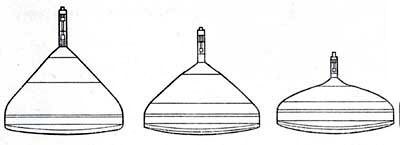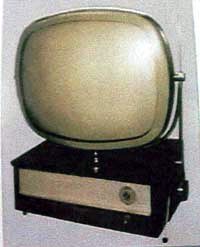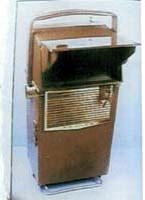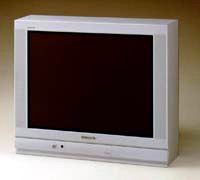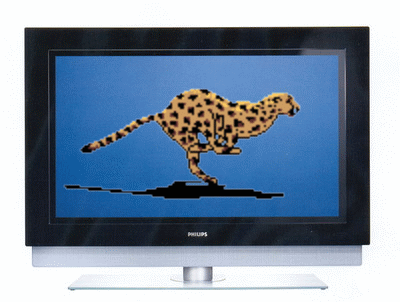9.7.2 - FROM THE B&W TO THE DIGITAL
TELEVISION RECEIVERS
| In the mid fifties, even
considering its enormou success either in the USA as well as in Europe,
the black and white TV had minor improvements since the researches
were concentrated mainly in the new field of the video colour transmissions. However, forced by a strong competition in a saturated market, it was mandatory the search for an innovative product. In this way, PHILCO, in the USA, after a long and intensive research work launched simultaneously in the marketplace a technological advanced series of television receivers' known as PREDICTA and SAFARI. The PREDICTA, was a very provocative family of console and table top receivers, whose main innovation was its industrial design developed by the efforts of PHILCO's designers like Sev Jonassen, Herbert Gosweiller, Richard Whipple. The PREDICTA, would not have been possible without the 110º picture tube developed in the mid-fifties and later further improved by the PHILCO's engineers which redesigned the cathode in a flat shape allowing the placement of many of the neck's components inside the tube and so reducing its length. (a) Another innovative aspect was the use of new types of polimeric materials for the molding of the picture tube protective frame also carefully tinted with selected colour to enhance the picture contrast. Its electronic concept was fairly conventional, using a combination of hand wiring as well as of the inceptive printed circuit board technology. (b) If the PREDICTA became famous by its design, the SAFARI by its small size, as it can be considered the first truly portable transistorized battery-operated television receiver. The SAFARI has an interesting technological concept. In this way to improve the use of the 2" picture tube, the receiver had an optical system developed by PHILCO'engineer Ernie Traub, which projects the virtual image 60 cm behind the screen providing a large viewing area, equivalent of a 14" conventional screen. Its electronic circuit topology used 21 transistors powered by a rechargeable 7 V battery providing 4 hours of continuous operation. However, in spite of its good image quality without optical distortion, and excellent electronic performance, its sales dropped quickly due to its quite high retail price. (c)
|
